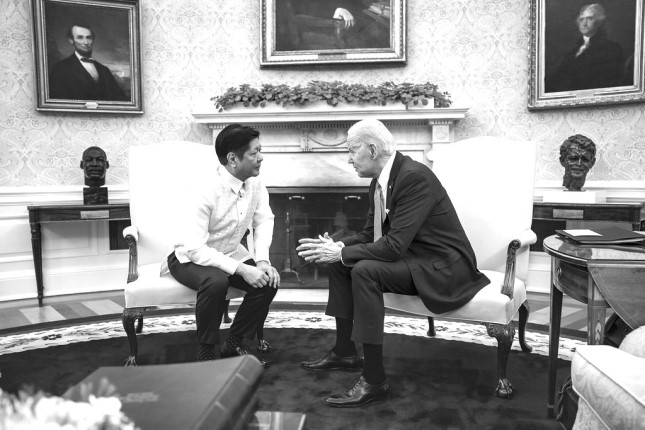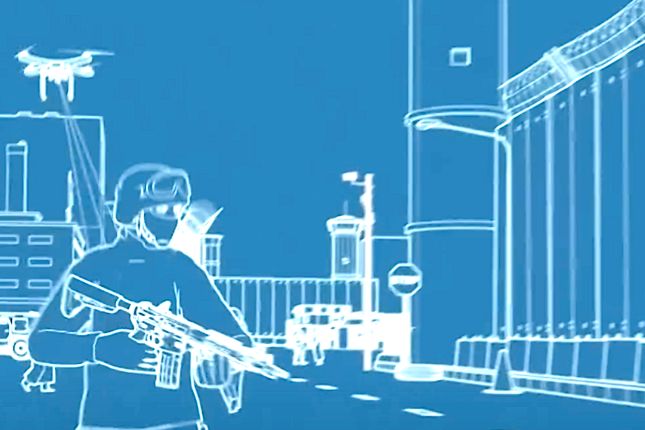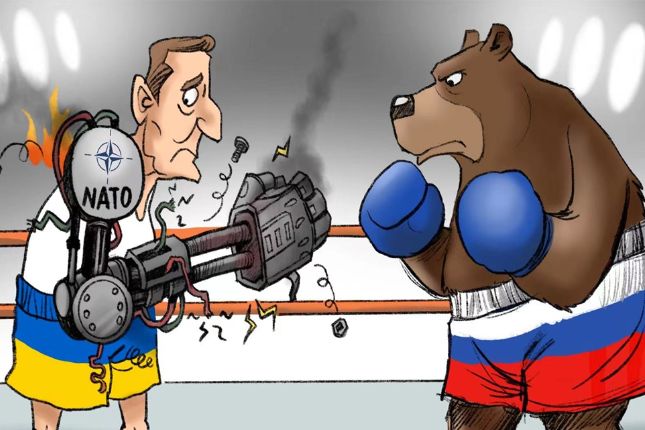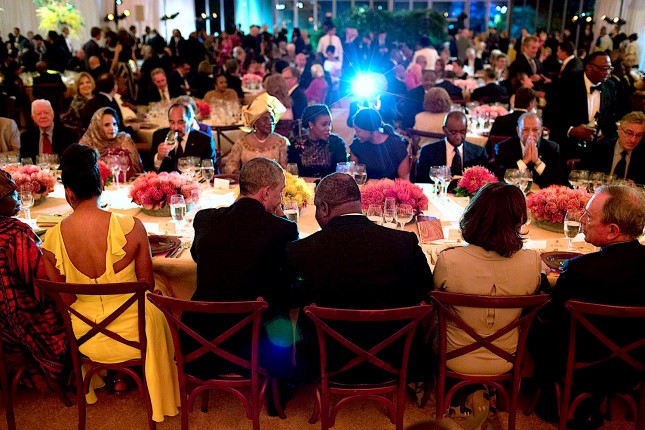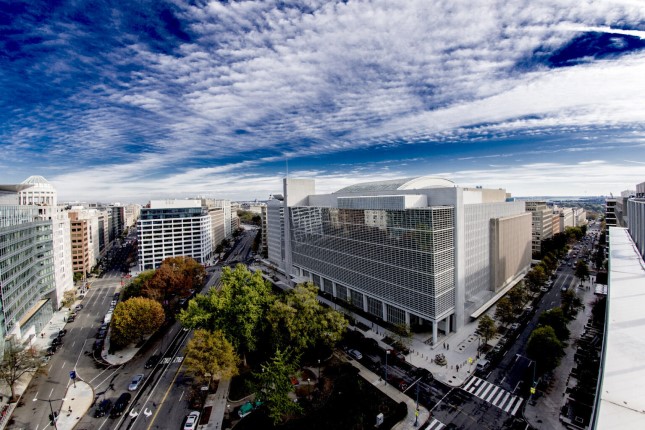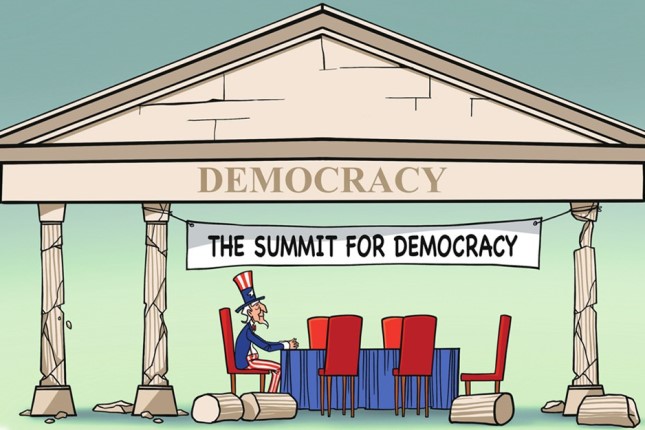Political tensions are increasing in the Asian-Pacific region after a summit in Washington resulted in indications that New Zealand, Japan and the Philippines are moving towards greater integration with the U.S.-led military bloc in the region.
Philippine President Ferdinand Marcos Jr., Japanese Prime Minister Fumio Kishida and U.S. President Joe Biden attended a trilateral summit on Thursday, where they announced an agreement enhancing military operation, including joint naval exercises alongside Australia in the disputed East China Sea.
It followed a joint statement last Tuesday by Australia, the U.K. and the U.S. confirming Japan as a candidate to join “Pillar II” of the nations’ AUKUS nuclear submarine alliance, established as part of preparations for war with China as the U.S. seeks to contain its peer rival and maintain hegemony.
New Zealand, Canada and South Korea were also touted in the media as Pillar II candidates.
Pillar II is slated to involve technology sharing in areas like artificial intelligence, underwater drones, quantum computing and hypersonic missiles.
China’s Foreign Ministry spokeswoman Mao Ning said signaling the bloc’s expansion would further escalate an arms race “to the detriment of peace and stability in the region.”
The trilateral meeting coincided with a visit by New Zealand’s Foreign Minister Winston Peters to Washington, where he released a joint statement with U.S. Secretary of State Antony Blinken that claimed there was a compelling need for New Zealand to work more closely with the U.S.-led “frameworks and architectures” in Asia-Pacific.
The April 11 statement said: “We share the view that arrangements such as the Quad, AUKUS, and the Indo-Pacific Economic Framework for Prosperity contribute to peace, security, and prosperity in the Indo-Pacific and see powerful reasons for New Zealand engaging practically with them, as and when all parties deem it appropriate.”
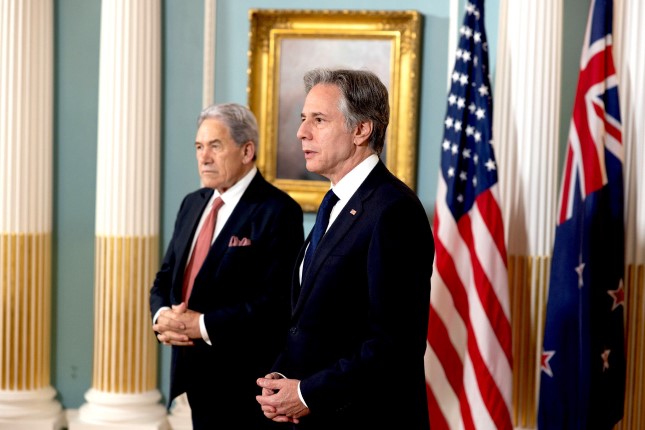
Peters and Blinken and in Washington on April 11. Photo: State Department / Chuck Kennedy.
Former New Zealand Prime Minister Helen Clark, the most high-profile critic of the country’s continued drift away from an independent foreign policy, interpreted the statement as a precursor to New Zealand joining Pillar II. She said the decision was undemocratic, as the government had not campaigned on the issue and so had no popular mandate to join the pact.
She told the Q+A TV programme: “The issue is do we keep our heads and say ‘does what we’re doing contribute to trying to lower tensions, or does it contribute to raising them’. It’s an open secret that AUKUS… is aimed at China. China also happens to be the biggest trading partner for New Zealand twice the size of Australia’s export take from us and rather more than the U.S. So, something quite doesn’t add up here.”
"Extremely Bellicose"
The escalating security dilemma amid moves by the U.S. to encircle China with more military bases, while enlarging AUKUS, is worrying many in the region.
“I was at an ASEAN [Association of Southeast Asian Nations] workshop in Jakarta last week and it’s pretty clear that everybody in the Pacific is worried,” Pascal Lottaz, associate professor for neutrality studies at Kyoto University, said in an interview with Consortium News. He said: “ASEAN is worried about what to do if a war breaks out because the rhetoric coming from the U.S. and from China is just so extremely bellicose. When people say like, ‘there was going to be war within the next five years’ or by 2025 that worries everybody. And it could become a self-fulfilling prophecy.”
What adds up for Lottaz, like many geopolitical analysts, is military bloc expansion being part of U.S. machinations to maintain its primacy dangerously playing out in the region.
“I do view this as an outgrowth of the emerging multipolarity and the U.S. trying to subdue China,” Lottaz said.
With the “unipolar moment” of U.S. hegemony now ending as centres of power extend south and once again to the east, Washington is nevertheless pursuing its doctrine of full-spectrum dominance in efforts to contain its peer competitors.
The futility as well as danger of this approach may be underlined by the fact that even states like Iran and South Africa can effectively determine the direction of geopolitical events in defiance of U.S. pressure.
“We’ve never had a moment when smaller partners, smaller parts of the system, could really defy the larger ones,” Lottaz said. “We’ve never had a situation where South Africa could, through the courts, really impact world events or how world events are perceived.”
“I’m also talking militarily,” he added. “Look at how North Korea has very successfully defied not only the U.S. but also China to build nuclear weapons and look where that got North Korea compared to Iraq. “We also see how the West is not able to subdue Russia and is now getting this huge pushback from the Global South. So, this multipolarity will not inherently change what countries want, but it will change what countries can do and then the question is, will this lead to a management of the situation or is it going to lead to more war?”
The trilateral agreement among the U.S., Japan and the Philippines is likely to alarm China due to its possible outworkings in the South China Sea and concerns over increased U.S. access to neighbouring coastal bases, particularly near conflict hotspot Taiwan.
It may also signal to its neighbours that they can play hardball in the South China Sea if they so wish, as the U.S. offers protection.
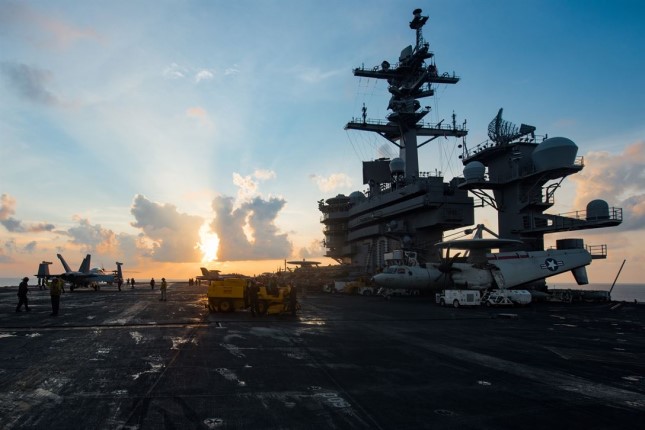
The aircraft carrier USS Carl Vinson in the South China Sea in 2017 during a regularly scheduled Western Pacific deployment. Photo: DoD / Matt Brown.
In July 2016, the Permanent Court of Arbitration in The Hague ruled under the U.N. Convention on the Law of the Sea (UNCLOS) that China’s claims to rights and resources with the nine-dash line, which encompasses about 90 percent of the South China Sea, had no legal basis.
China rejected the arbitration, while then Philippines President Rodrigo Duterte decided against pushing for legal enforcement, instead focused on diplomacy, hoping his non-confrontational approach would make an impression.
International relations expert, Otago University’s Professor Robert Patman, said the trilateral agreement could contribute to tensions, but that China could have avoided it altogether.
“China itself is its own worst enemy because it didn’t accept the Hague tribunal’s ruling when the Philippines took China to the international court,” he told Consortium News. “So, it’s not surprising that there’s been continued tensions between the Philippines and China over different territorial claims. There are about seven claimants in the South China Sea. China, if it had accepted that finding, they could have diffused things considerably and they haven’t. They ignored it and unfortunately, this is a pattern with Great Powers — uphold the rules, or rules-based order, until it contradicts their interests.”
Lottaz agrees. “The Philippines is being bullied by China time and again,” he said. “Duterte’s strategy failed and so now Marcos Jr. is going in the other direction and saying, ‘Well, if being nice doesn’t work, then let’s just allow the Americans to have more bases over here.’ That’s what he’s doing and the Americans are now very happy expanding their bases network.”
Marcos Jr. told the media at the weekend the new trilateral agreement would “change the dynamic” in the region.
The Philippines is increasing the number of military bases that the U.S. can access, notably expanding port facilities in the Batanes Islands, just 125 miles south of Taiwan.
China wasted no time after the trilateral, demanding on Friday the Philippines remove a warship intentionally grounded at Ren’ai Jiao islands, warning any attempts to build fixed facilities and a permanent outpost would be a violation of its sovereignty that would not be tolerated.
Pushing Japan’s Militarization
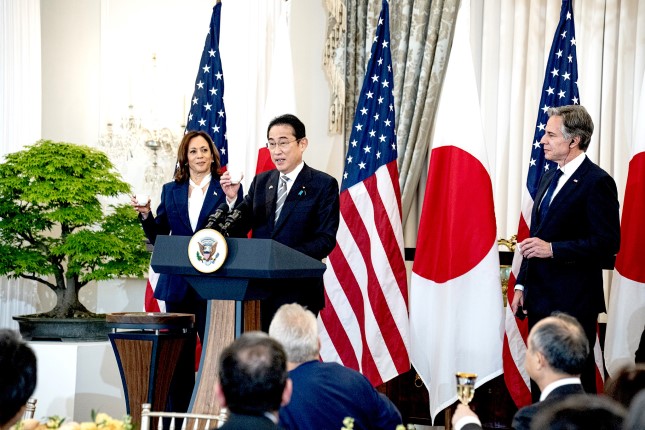
Japan’s Kishida at a State Department luncheon in his honor, with U.S. Vice President Kamala Harris on left, Secretary of State Antony Blinker on right, April 11. Photo: State Department / Freddie Everett.
Lottaz calls the trilateral summit in Washington a show of political unity, but also a further sign the U.S. is pushing a militarization of Japan and the Philippines’ relationship and that a formal alliance was being charted.
Japan has formidable military and technological capacity, but its pacifist constitution imposed by the U.S. after World War II restricts it from having a conventional standing army.
The Japanese Self Defence Forces (JSDF) have been geared towards internal security, although that is changing. Japan is an Indo-Pacific NATO partner, alongside South Korea and New Zealand. It has contributed to NATO operations in Afghanistan and the Balkans, maintains interoperability with the alliance. A NATO liaison office is being set up in Tokyo this year to cooperate with Australia, Japan, New Zealand and South Korea.
Prime Minister Kishida also announced last year Japan would double military expenditure to 2 percent of its gross domestic product and change military policy allowing it to strike targets abroad.
However, moves like joining Pillar II and sending troops abroad would involve a huge shift in both policy and attitudes in Japan.
Nothing short of a direct attack on the country could possibly remove the constitutional articles governing its military remit, Lottaz said.
“Two thirds majority of Parliament would need to say yes to changing the constitution and then 50 percent of the population in a referendum — double mechanisms, a double lock, which is why it’s so hard to change,” he said.
New Zealand’s move towards Pillar II and NATO has also been incremental. Under its right-wing coalition voted in last year, the journey towards integration has accelerated, as its foreign minister’s joint statement with Blinken demonstrates.
Before Winston Peters’ U.S. trip he had attended a NATO foreign ministers meeting in Brussels on April 3-4, after meeting Polish and Ukraine government officials over the U.S. proxy war with Russia.
Peters said he expected to conclude talks on an Individually Tailored Partnership Programme (ITPP) with the U.S.-led alliance “in the coming months,” an agreement expected to involve significantly greater financial and military assistance to Ukraine as part of collective efforts to maintain the “rules-based international order.”
New Zealand Defence Force soldiers are currently training Ukraine’s military in the U.K.
Like Japan, New Zealand is constrained by its own constitution, which includes a nuclear free law banning nuclear-powered and armed ships from its territory.
Former Australian Prime Minister Scott Morrison at the weekend urged New Zealand to abandon the legislation introduced in 1987, an unlikely scenario given a current bipartisan position on the anti-nuclear tradition. At present AUKUS submarines would be banned from New Zealand shores.
Pillar II is being pushed as a “non-nuclear” aspect of AUKUS, but as China’s ambassador to New Zealand, Wang Xiaolong, writing for Newsroom, pointed out on April 11, “Voices claiming that Pillar II is not violating the Treaty on the Non- Proliferation of Nuclear Weapons (NPT) requirements neglect the interlinks between the two Pillars. The sole purpose for Pillar II is to support and serve Pillar I, either financially or technologically.”
He added: “And if you read carefully the latest announcement by the AUKUS members, you’ll easily find that one critical reason to invite more participants is to consolidate the dominance of a certain country in the ‘Indo-Pacific’ and shift and spread the exorbitant cost.”
Patman points to considerable pushback in Australia over AUKUS’ cost. Canberra is hoping for delivery of Virginia-class nuclear submarines from the U.S. in the interim sometime in mid-2030, while new SSN-AUKUS submarines are being built at an approximate cost of A$368 billion (US$239bn).
He believes not all nations weighing up Pillar II involvement will be joining any time soon in any case, and in particular Japan, due to tight security rules about sharing technology with partners.
New Zealand’s national interests, like all Asia-Pacific nations, are not served by joining a military bloc intent on waging war against a country where 30 percent of its exports are destined annually. There could be immediate repercussions for joining, as well as catastrophic consequences in a future war against an imagined enemy.
“The Chinese ambassador to New Zealand was very clear on this in February when he said that New Zealand is a sovereign state and it’s free, if it chooses, to join Pillar II of AUKUS,” Patman said. He added: “But he made it clear that China opposes AUKUS which it sees as a Cold War construction and he said — and this was a very subtle point — that in areas there would be consequences for New Zealand, including for its economy. This was a veiled warning, in my view, to the farming community, which is the backbone of the country in terms of economics… The Chinese ambassador was reminding a National Party-led government that their core constituency could be disadvantaged.”
More fundamentally, as Pacific historian and foreign policy activist Marco de Jung remarked after the Washington joint statement:
“AUKUS causes the very instability it claims to address. New Zealand is better using its limited resources to support Pacific-led regionalism against superpower competition.”
Main photo: President Ferdinand Marcos Jr. with U.S. President Joe Biden at the White House on May 1, 2023 © White House / Adam Schultz.
Source: Consortium News.
